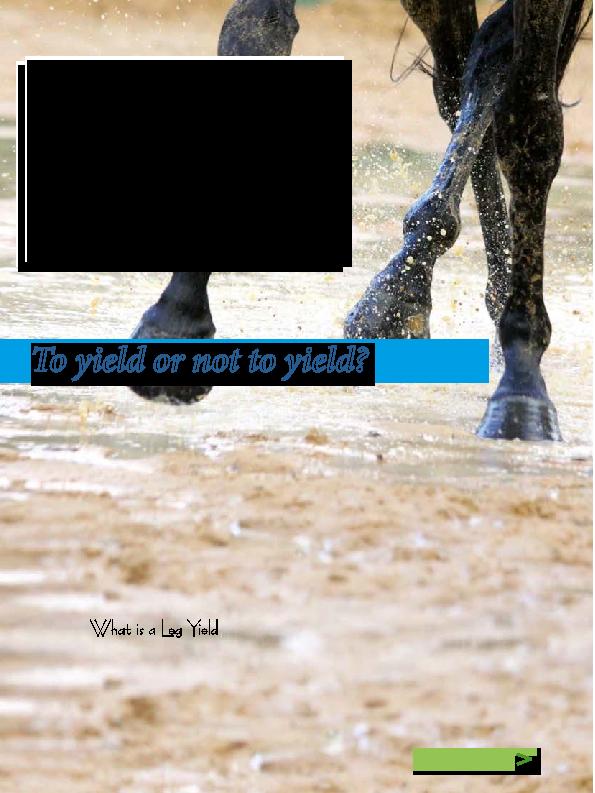
LEG
YIELD
LEG
YIELD
To yield or not to yield?
H
orses are by nature one sided and prefer bending more to one side than the other, similar
to people who are either right or left handed. Riders, regardless of what discipline they
prefer, have an understanding of the importance of developing both sides of the horse
gymnastically in order for it to perform at its best and to help prevent unsoundness in the future
due to uneven weight bearing. There are many exercises available to riders to enable them to
decrease the possibility of creating an unbalanced horse, including influencing the horse by using
their weight, rein and leg aids . One exercise that teaches the rider co-ordination and independent
application of the aids, while teaching the horse co-ordination under the rider's weight and gives
the opportunity to check the obedience and response to the aids and improve the horse's looseness
and suppleness, is the lateral exercise of LEG YIELD.
What is a Leg Yield
In a leg yield the horse travels both forwards and sideways whilst keeping its spine straight, with
both shoulders and the hindquarters being equal distance from the spine. The horse is flexed
(the rider sees the horse's eyelash and ridge of the nostril) slightly away from the direction it
is travelling and its inner legs cross in front of the outer legs, whilst the horse's body remains
parallel to the outside wall. The leg yield is usually performed at walk and trot and, when first
introduced, the amount of sideways travel should be little until the horse learns how to cross its
legs without hitting itself.
by Liz Tollarzo

